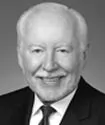President Obama stated in his State of the Union address to the nation: "wherever and whenever I can take steps without legislation to expand opportunity for more American families, that's what I'm going to do." He has already signed an executive order raising the minimum wage for workers under new federal contracts to $10.10 an hour. He also announced a plan for new government-sponsored savings accounts where employers do not offer 401(k) accounts. This has generated criticism. Senator Ted Cruz (R-TX), for example, has accused the Obama Administration of an "Imperial Presidency." We would note, however, that this is not the beginning of a go-it-alone approach. Federal agencies have been moving forward in areas where Congress has not, including regulating emissions from coal-fired plants, and increasing affirmative action requirements for federal contractors. But the use of the executive order is a step further.
Executive orders have been used by every President since George Washington, across a broad range of policy areas. While their scope is open-ended, we would note that the Supreme Court held in Youngstown Sheet & Tube Co. v. Sawyer that their use "must stem either from an act of Congress or from the Constitution itself." 343 US 579 (1952). President Obama has used the executive order, like his predecessors. But this statement indicates a willingness to go further. With less than three years left, we expect the Obama Administration to do so. Litigation, and possible congressional attempts – particularly through the House of Representatives – to control any perceived excesses of Presidential power, are also anticipated.
This article is presented for informational purposes only and is not intended to constitute legal advice.

